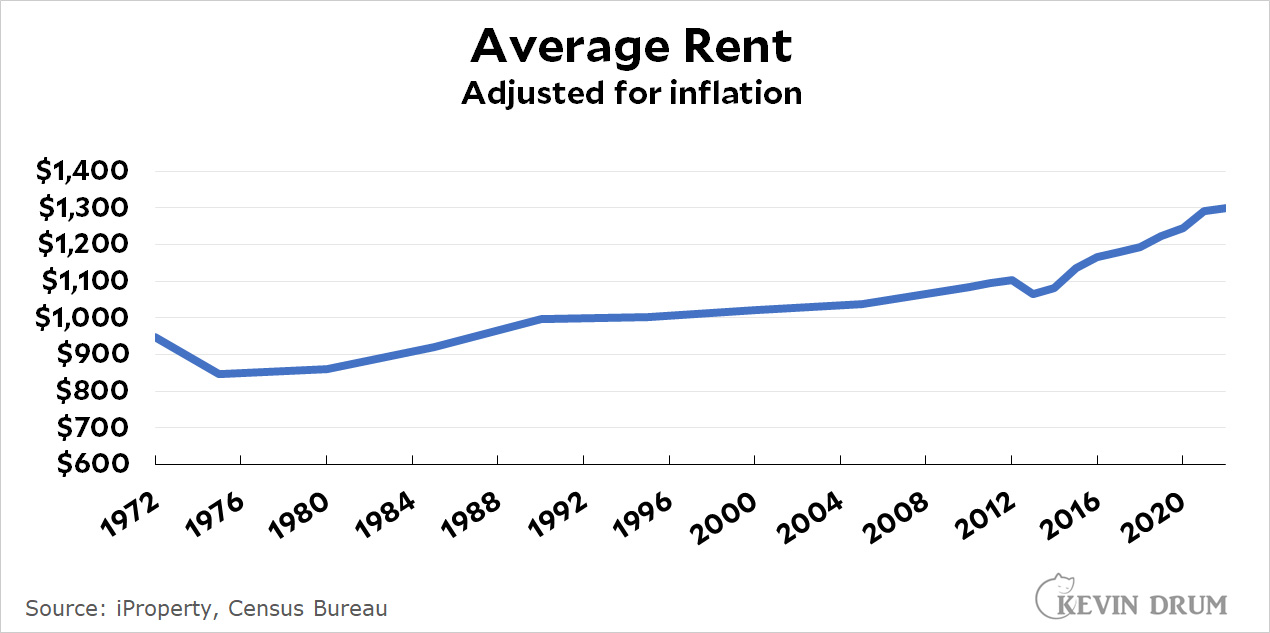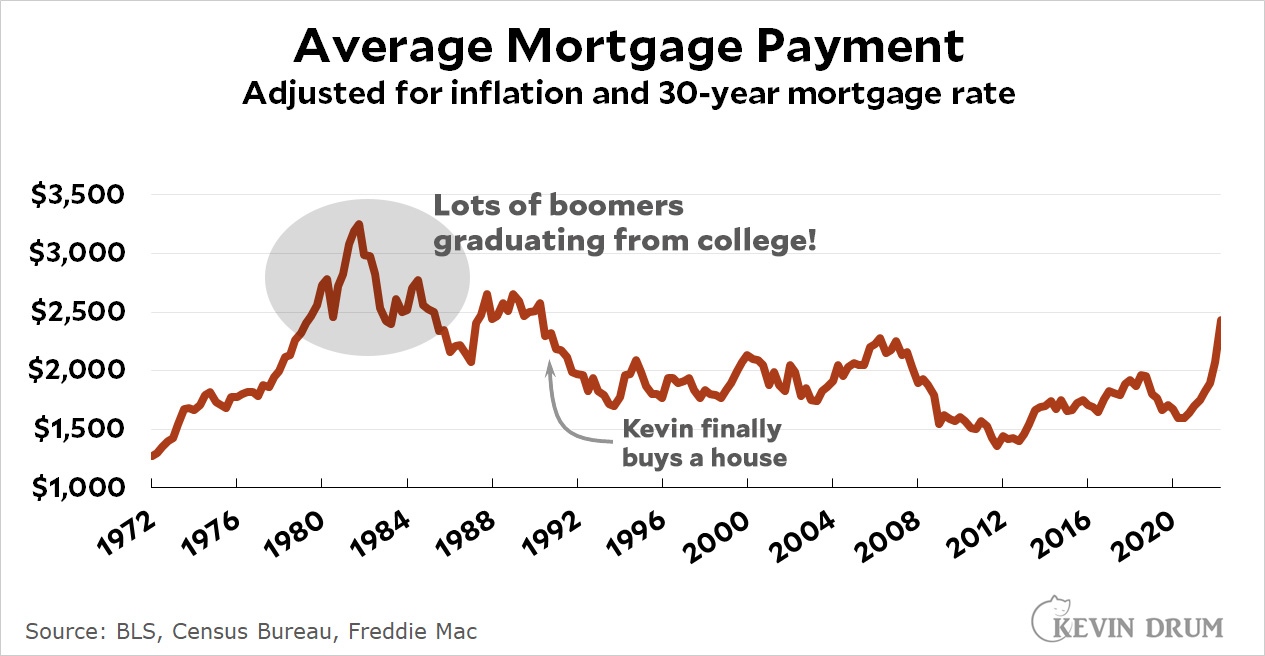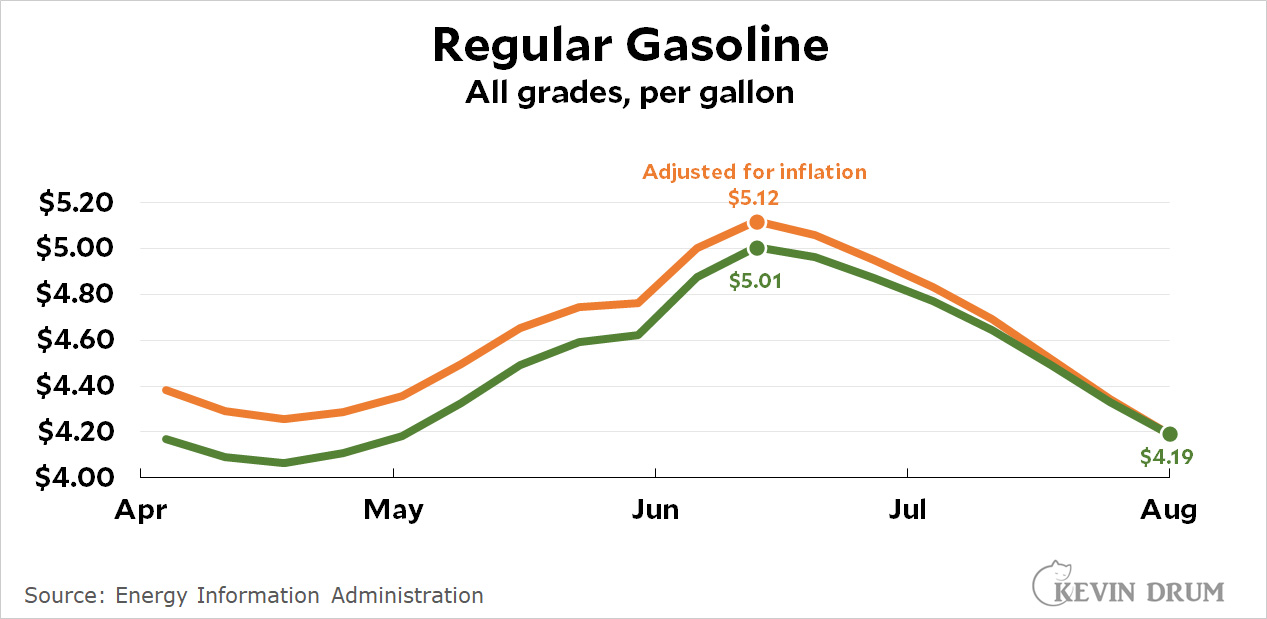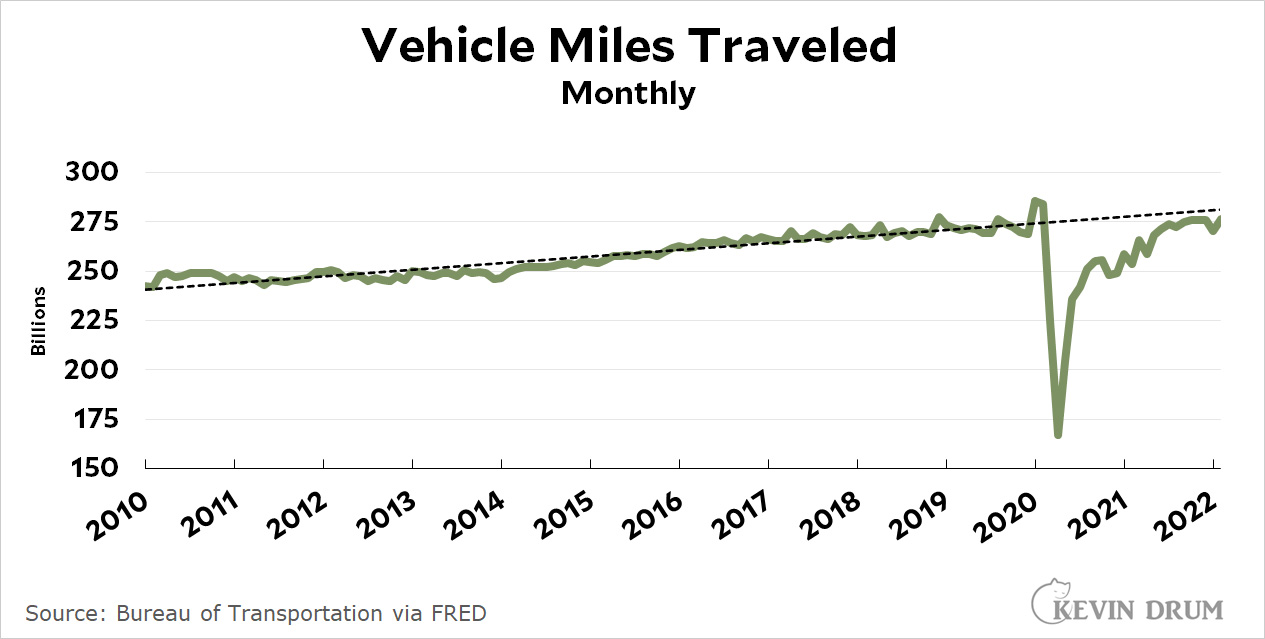WARNING: I have deleted the original version of this post and replaced it with something completely different. Sorry.
Shall I never be rid of this stupid topic? I'm talking, of course, about the reallocation of veterans funds from the discretionary budget to the mandatory budget. Here's where I am now.
The Congressional Budget Office examined the original PACT Act on February 18 and found no reallocation. It was passed by the House on March 3 and sent it to the Senate. On June 6, in a footnote, CBO makes clear that its estimate of the bill when it passed on March 3 was the same as its original February 18 estimate. In other words, there was no reallocation in the House version.
In its June 6 analysis CBO examined the latest version of the bill while it was sitting in the Senate. In this version, they estimated that the bill would reallocate $400 billion in existing spending from discretionary to mandatory:
This estimate reflects changes in the version of the bill as posted on the website of the Senate Committee on Veterans’ Affairs.
This is clear: The reallocation happened in the Senate. In a show of immense diligence and curiosity, I compared the March 3 House bill to the June 6 Senate bill. Here are the relevant sections:
| House Bill Passed on March 3 |
Senate Bill as of June 6 |
| (b) AUTHORIZATION OF APPROPRIATIONS.—There is authorized to be appropriated to the Fund for fiscal year 2023 and each subsequent fiscal year such sums as are necessary to increase funding, over the fiscal year 2021 level for the Veterans Health Administration of the Department of Veterans Affairs, for any expenses incident to the delivery of veterans’ health care and benefits associated with exposure to environmental hazards in service, including administrative expenses, such as claims processing and appeals, and for medical research related to hazardous exposures. |
(c) AUTHORIZATION OF APPROPRIATIONS.—There is authorized to be appropriated to the Fund for fiscal year 2023 and each subsequent fiscal year such sums as are necessary to increase funding, over the fiscal year 2021 level, for investment in—
(1) the delivery of veterans’ health care associated with exposure to environmental hazards in the active military, naval, air, or space service in programs administered by the Under Secretary for Health; (2) any expenses incident to the delivery of veterans’ health care and benefits associated with exposure to environmental hazards in the active military, naval, air, or space service, including administrative expenses, such as information technology and claims processing and appeals, and excluding leases as authorized or approved under section 8104 of this title; and (3) medical and other research relating to exposure to environmental hazards. |
In the House bill, funding is for (a) incidental expenses such as claims processing and (b) medical research. That's new spending and would be classified as mandatory. The Senate bill includes those two but adds funding for "delivery of veterans health care." That's existing spending, and it would be redefined as mandatory. That's apparently where the $400 billion comes from.
At least, that's what CBO thinks, and I trust their legislative analysis a whole lot more than I trust mine.
So after changing my mind once again, I'm back where I started: This reallocation happened in the Senate, and that means the culprits are probably Sen. Jon Tester and Sen. Jerry Moran.
 This is probably due to increased Medicaid coverage and the expanded subsidies in the 2021 COVID stimulus bill. Note that 9.6% represents 26 million people.
This is probably due to increased Medicaid coverage and the expanded subsidies in the 2021 COVID stimulus bill. Note that 9.6% represents 26 million people.







